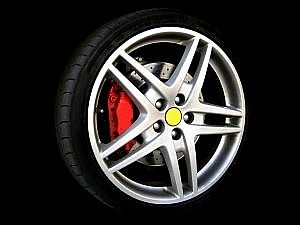
Finding the right tire size is like learning a whole new language. With the letters, numbers, slash letter, number and maybe another letter combination, car tire sellers can determine which tire is best fits your vehicle. While it may sound like some type of cryptic morse code, it's not. Here's how to understand car tire size charts.
Recognize the first letter stands for vehicle type for which the tire is to be installed. For example P means Passenger, T mean Temporary Spare, LT means Light Truck, ST stands for Special Trailer and the letter. That part of the tire size chart isn't too difficult to decipher.
Decipher the tire width number. The digits that follow the letters represent the width or the cross section measurement in millimeters. Therefore a tire size code of P225 means the tire is for a Passenger vehicle and the tire cross-section width is 225 millimeters measured from one sidewall to the other.
Understand the concept of aspect ratio. The aspect ratio follows the slash after the width in the tire size chart. For example a tire size of P225/60, the number 60 is the tire's aspect ratio. The aspect ratio represents the percentage of width to height. Therefore the height of this tire is 60% of its width.
Become familiar with the tire's construction. The letter following the aspect ratio indicates the car tire's internal construction. For instance, R means radial, which is most commonly used type of tire.
Understand the rim size. The next number following the tire's construction represents the rim size. Therefore a tire size of P255/60 R15 fits a tire rim size of 15 inches. Now that you have deciphered the car tire size lingo, go out and replace your warn tires.